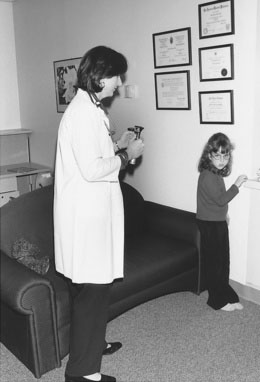chapter 6 Developmental and Behavioral Assessment
Developmental Surveillance and the Developmental/Behavioral History
I strongly recommend using a surveillance tool but recognize that there also are times when you will need to ask about development in a more informal way. For preschool children, ask one or two surveillance questions in each key area of development: gross motor, fine motor–adaptive, personal-social, and receptive and expressive language. The milestones indicated in Tables 6–1 and 6–2 provide some suggestions. If you are pressed for time, focus on high-yield areas: for preschoolers, ask about language function and personal-social skills, and for school-aged children, ask about reading and math skills. Remember, you generally will have an opportunity to observe the child’s gross motor and fine motor skills during the physical examination.
Family History
When children have developmental problems, it is important to ask specifically about consanguinity.
Behavior Problems
Children with an autistic behavior pattern show impairment in the following three key areas:
Direct Developmental Examination
Strategies to enhance the child’s participation
Shy and Frightened Children
You know you are in trouble when you walk into the room, introduce yourself, and the youngster immediately dives for his mother and buries his face in her lap. When this happens, you may have the urge to take refuge yourself and refuse to participate—but all is not lost. Most shy children can be won over with a gentle, nonthreatening approach. First, remove any items that the child may consider threatening, including your white coat. Medical equipment should not be hanging around your neck or protruding from your pockets (Fig. 6–1). For children in the hospital, a change of environment may help; a parent counseling room or conference room often offers a less threatening environment.
< div class='tao-gold-member'>
Stay updated, free articles. Join our Telegram channel

Full access? Get Clinical Tree



